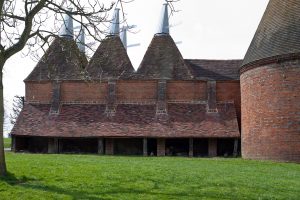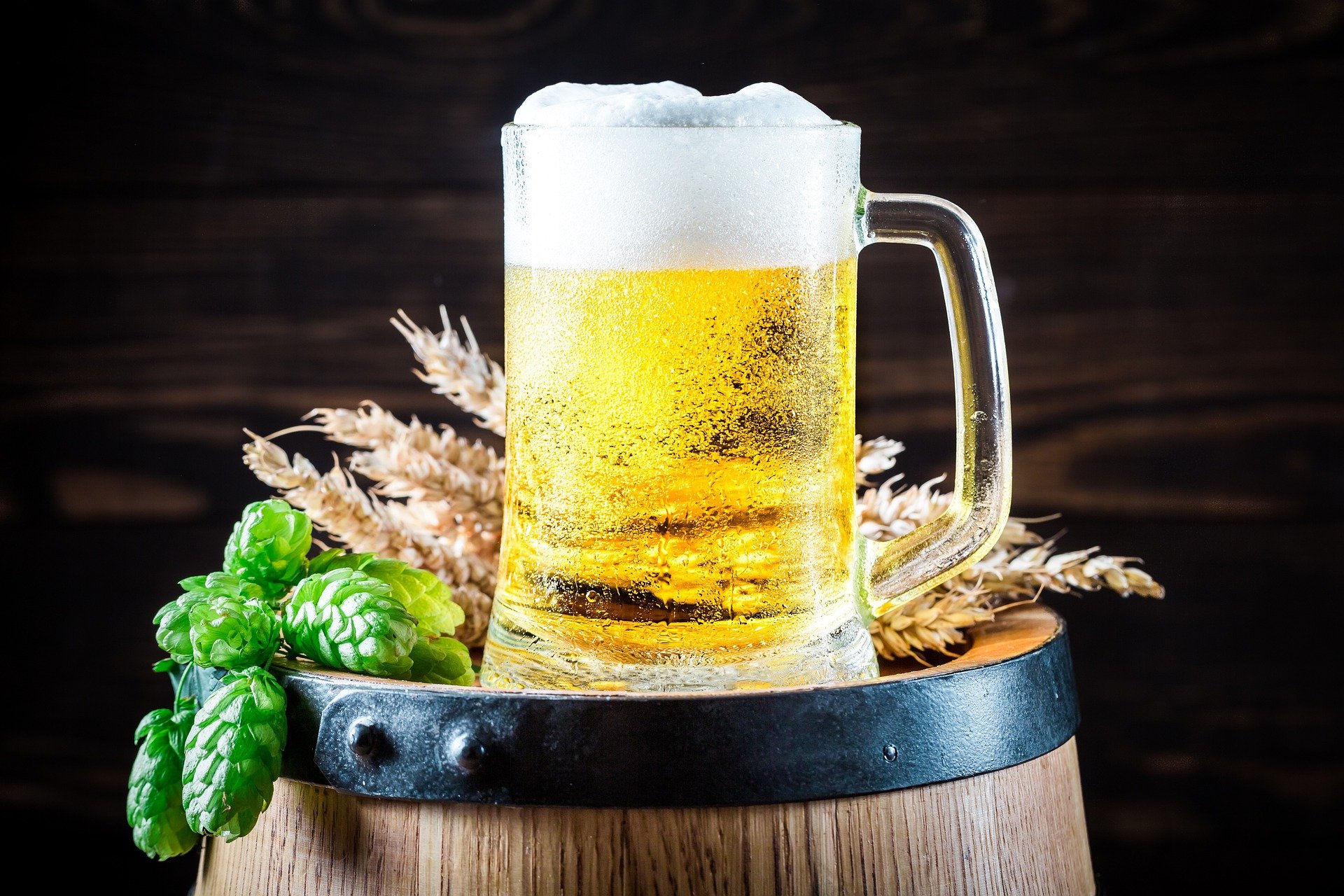Last Updated on September 19, 2022 by ADMIN-TOM
Once upon a time I worked in an Oast House…
“What’s an oast house?” I hear you ask.
It’s a place used for drying hops, which is a main ingredient in the production of beer. It’s what gives beer its distinctive flavour and is quite smelly when picked from the vine like plant which grows up a large frame. You can see a hop head, the green bit, in the image above. Below is you can see an Oast House with its distinctive chimneys.

My job was to fill sacks with hops after they have been pulled from the stringy vine like growth, washed and then poured into a hopper. I had two bags attached to the bottom of the hopper and a lever which I could move left or right – thus filling either the left bag or right bag. When full I would detach the bag, attach an empty one and while another bag was filling carry the hop bags up a short flight of stairs and deposit the hops onto the drying floor. There a skilled worker would spread the hops for drying. meanwhile I had to race back down the stairs just in time to switch the lever over to an empty bag, detach the full bag and so on and so forth.
The only way to carry the bags, which were about my height, six feet two inches, was on my head sagging front and back as I needed two hands to climb the very steep steps.
At lunch time we took a break. While eating my sandwich, I couldn’t help but notice there was steam writhing round my head. Being a baldy and sweating a lot due to my exertions, the sticky hops had left a residue on my head which was now gently steaming away.
The reason I mention all this is that hops are very smelly, and I stank for days afterwards despite having a shower and a bath every day. In fact, beer making in general is a smelly job, which is why I was not surprised to read that a company called Acme Brick Company in the US had abandoned using pulp residue from beer making in the process of making red clay bricks. Apparently, had the idea worked, the bricks would have reduced by 28% the amount of heat they lost because they would have been more porous than traditional bricks. Plus, the process was a lot more environmentally friendly. The only problem was that prior to firing, the mixture used to form the bricks gave off an overpowering stench that no one could tolerate.
Ah well, another brick in the wall of ideas that didn’t quite work out.
Copyright Tom Kane © 2022
You just can’t judge a book by its cover. So maybe you would like to read one of my books as well as admire the cover.
Download a FREE copy of The Brittle Sea.
Historical fiction, romantic thriller.
Get Your eBook Now from any of the retailers below.
Just click on the blue button.











